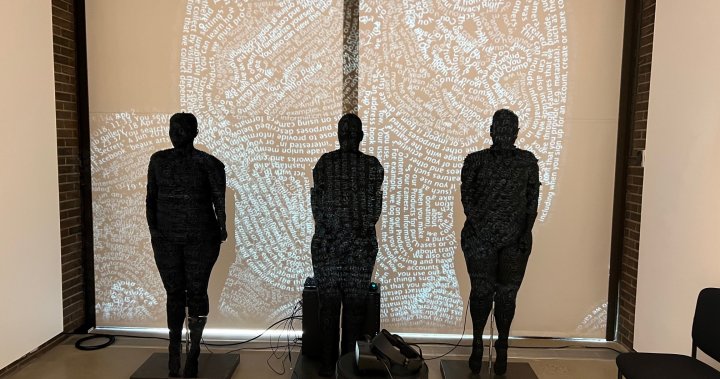
Alberta art exhibit uses virtual reality to explore who we are as digital beings
Global News
An art exhibit at the University of Alberta's FAB gallery called Know Thyself As a Virtual Reality uses VR to visually communicate what we're becoming as digital beings.
Why are people interested in virtual reality and what can it tell us about who we are and what we might become in a digital world?
“As an artist, it’s a question I’ve been asking for decades,” said artist and media arts professor Marilene Oliver. “Now with virtual reality, when we really are completely immersed in the digital, I wanted to ask that question.”
In addition to her teaching work, Oliver is the co-curator of an art exhibit at the University of Alberta’s Fine Arts Building gallery called Know Thyself As a Virtual Reality.
“It’s based on a Greek maxim: Nosce te Ipsum, which was used in the Temple of Apollo in Delphi. In that time, it was: ‘To know your place within a social hierarchy.’
“Later you find it in anatomical engravings, where it’s: ‘To know thyself as a divine work of God.’ And now, the more we’re becoming digital, the more we’re creating these huge data sets of everything we do, we now need to know ourselves, I believe, as digital objects and subjects,” Oliver explained. “This is what we are called to do now to understand ourselves.”
There are seven artworks that use virtual reality to explore different aspects of data and the digital aspects of human life. The works brought together many different disciplines including fine art, radiology, engineering, music, digital humanities and computing science.
Oliver explains one focus of the exhibit as: “Can we find a way to visually communicate what we’re becoming as digital beings?”
That’s where the virtual reality comes in. Donning a headset and hand controls, a person is immersed in data — the information, how it looks, sounds and feels — and can interact with it.
